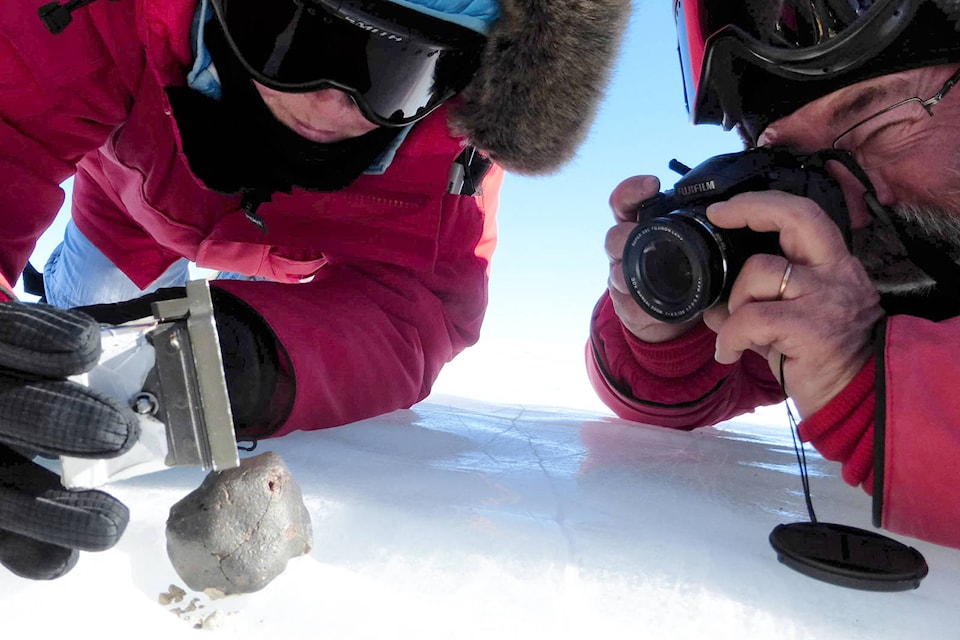Chicken Little might have been wrong about the sky falling, but every so often chunks do fall from the sky.
Meteorites, pieces of rocky material from space that make it to the Earth’s surface were, once upon a time, confused with worked flint arrowheads and spearheads, turned up by farmers’ plows in Europe and Asia. They were called thunderstones, the tips of thunderbolts that fell from the sky during storms.
Folklore gave way to science and it’s long been known that meteorites are pieces of asteroids or planetary debris that have crossed paths with Earth’s trajectory through space and survived the extreme heat caused by the friction of passing through Earth’s atmosphere to land on the planet surface. Since meteorites are delivered free of charge by nature, they are an inexpensive way to explore space, or at least the composition of neighbouring bodies in the Solar System.
At Nanaimo Astronomy Society’s November meeting, society members Bill Weller –retired Vancouver Island University’s professor in the physics, engineering and astronomy department, who has worked as an instrumentation scientist at observatories in Arizona and Chile – and Janeane MacGillivray, society director, will explain the reasons for hunting, collecting and studying meteorites and how they help scientists understand how the Solar System originated and developed.
It’s possible that pieces of fallen space rock and dust might even have seeded life on Earth, researchers say. Meteorites, such as the Tagish Lake carbonaceous chondrite meteorite that fell in northern B.C. in 2000 is particularly important to researchers because it contains organic matter, nanodiamonds and water.
Weller and MacGillivray will explain what makes meteorites different from Earth rocks, how scientists can tell where meteorites came from, such as the moon or Mars, and how they can be found anywhere by professional and amateur meteorite hunters who know how to look for them.
The society’s meteorite collection will be included in the presentation and Weller and MacGillvray will also run down checklists for identifying meteorites in the field.
The meteorite main presentation will follow short talk by society members Mary and Rich Ulrich about Biosphere 2, an experimental habitat in Arizona that operated from 1987 to 1994 that was the first real scientific attempt to provide baseline data for designing long-term human life support systems for space travel. Their talk will finish with a discussion about the conclusion of the experiment, its pitfalls, lessons learned and the innovations and human interactions from living in a closed system.
The meeting takes place Thursday, Nov. 28, at 7 p.m. at the Beban Park social centre.
photos@nanaimobulletin.com
Like us on Facebook and follow us on Twitter
